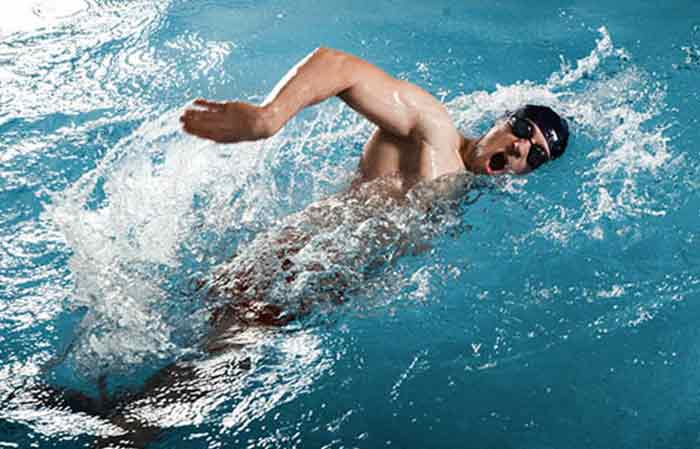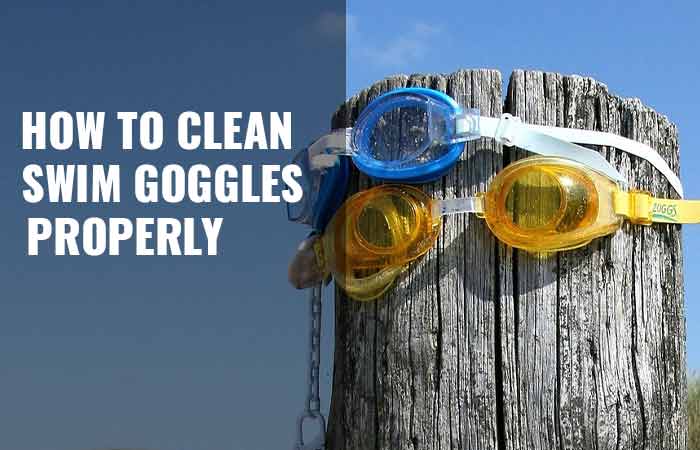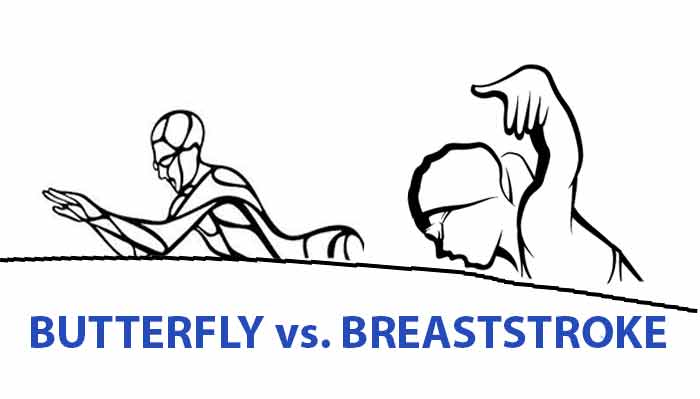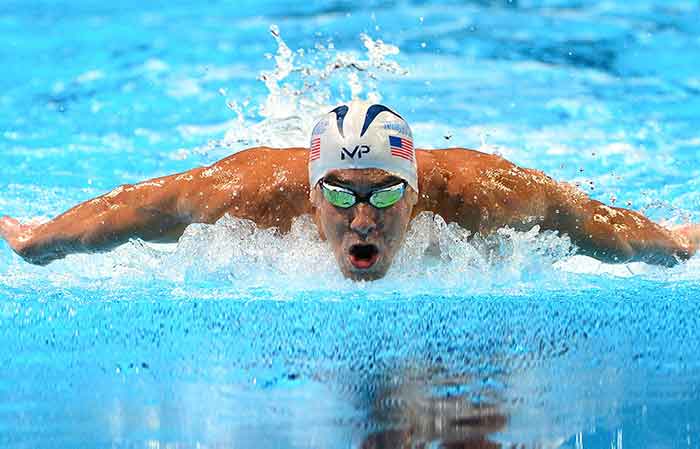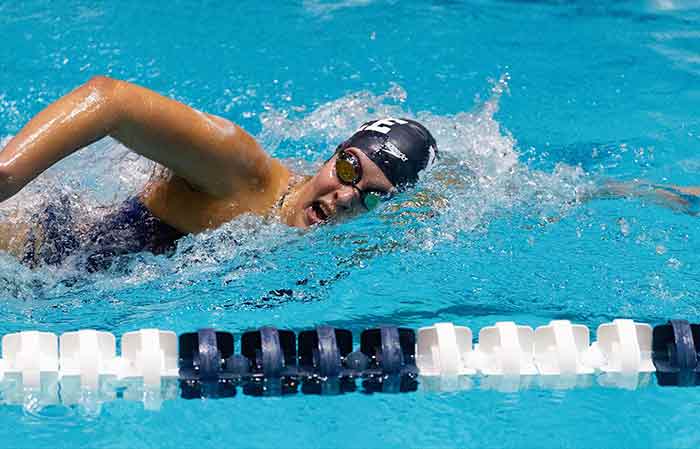How Long Does It Take To Learn To Swim? Adults & Children Guide
Thinking of plunging into the world of swimming, but uncertain about how long it takes to learn? You’re not alone; many beginners grapple with this question.
Typically, adults may need 20-25 hours of private lessons to acquire basic swimming skills. For children, it usually takes about a year to become proficient.
The duration can vary in length depending on individual factors such as age, quality of instruction, frequency of lessons, practice consistency, water confidence, prior experience, support, etc.
With regular practice and guidance from a professional instructor, most people can learn how to swim within a few months. Read for details.
Timeline to Learn Key Swimming Skills
Here is the general framework for sequencing key skill milestones:
| Time Period | Skill Level | Skills Developed |
| 1-4 weeks | Beginner | Water safety and acclimatization Breath control Standing Floating, gliding Kicking |
| 1-3 months | Intermediate | Freestyle arms Flutter kick Face-down swimming |
| 3-6 months | Intermediate | Efficient freestyle Backstroke/breaststroke Treading water Basic Dives |
| 6-12 months | Advanced | Butterfly stroke Flip turns All strokes with good technique |
| 12 months+ | Competitive | Mastery of All strokes Swimming regulations & rules |
The exact duration depends on the frequency of lessons, practice and other factors discussed below. Be patient as some skills require solid technique foundations first.
Factors Affecting How Long It Takes to Learn to Swim
The factors that influence how quickly you will learn to swim include;
Frequency of lessons & consistency
More frequent lessons, ideally 2-3 times per week, help accelerate learning by reinforcing skills.
Consistency plays a vital role in learning to swim. It is key to steady progress. The more you swim, the faster you can pick it up. Regular swimming helps build strong muscle memory.
This means your body gets used to the movements needed for swimming. Your mind also starts knowing what to do.
A gap in training might slow down your learning speed. Staying dedicated and committed will make things easier!
Quality of Instruction
The quality of instruction is a crucial factor in determining how long it takes to learn to swim. The effectiveness and efficiency of teaching can have a significant impact on the time required for an individual to become proficient in swimming.
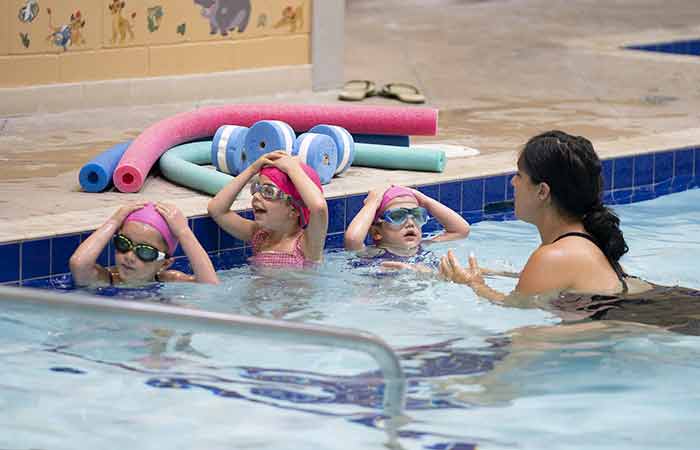
When receiving high-quality instruction, learners are more likely to progress quickly and develop essential skills. Competent teachers who understand proper techniques and provide clear guidance play a vital role in helping individuals overcome challenges and improve their swimming ability.
Studies have shown that learning from qualified instructors substantially reduces the risk of drowning, emphasizing the importance of receiving quality instruction when learning to swim.
Age
Children generally learn faster than adults, often mastering basics by age 3-5. Infants under 3 require specialized parent-assisted techniques. Adults advance slower but bring maturity to learning.
Fear of Water
Fear of water can slow down how fast you learn to swim. This fear is often called aquaphobia or hydrophobia. It can come from a bad event with water in the past. Many people who are scared of water have low or no swimming skills.
To swim well, you must deal with this fear first. You can measure your fear of water to see how it affects your ability to swim.
Gradual exposure and patience are effective strategies for boosting water confidence and speeding up your progress.
Motor Skills
Motor skills play a crucial role in how long it takes to learn how to swim. Motor skills refer to our ability to control and coordinate our movements. They involve muscle memory, coordination, and movement control.
Swimmers with good innate coordination often pick up the movements and rhythms of strokes more quickly. Stroke techniques become second nature in no time.
The development of motor skills is influenced by factors such as physical capabilities, body proportions, and fine motor skills.
It’s important to practice and repeat swimming exercises regularly to enhance these skills and become proficient in swimming. Focusing on developing your motor skills will greatly impact the time it takes for you to master this important life skill.
Environmental Factors
Environmental factors such as water temperature and access to suitable swimming facilities can impact your learning process. Having comfortable and safe swimming conditions will contribute to faster skill acquisition.
Support System
A supportive network of family, friends, or fellow swimmers can positively impact your learning experience. Encouragement, guidance, and shared experiences will provide motivation and boost your learning curve.
Prior Experience
Those with some previous swimming exposure, even informally, pick up new techniques faster than fearful non-swimmers starting from zero. Overcoming fear is a major hurdle.
Individual vs Group Instruction
Private one-on-one lessons allow coaching tailored exactly to the swimmer’s needs and pace. Group classes offer peer learning but less customization.
Fitness Level
General strength and stamina from other activities help support swimming endurance. Comfort in water eases acquiring skills. Underlying fitness provides an edge.
Desired Skill Level & Goal
Setting realistic goals based on the level of skill, you desire is important. Different levels of swimming proficiency require varying amounts of time to achieve. Understanding each level’s progression stages and expected timeframes will help you navigate your learning journey effectively.
Individual Aptitude
We all have our unique aptitude for swimming. Some might naturally get used to the water faster than others. However, regardless of initial talent, attentive practice will enhance the swimming skills for anyone.
Pool vs. Open Water
Pools allow easier initial skill-building. Open water adds challenges later.

The Learning Process for Children and Adults
Children and adults have different learning processes and timeframes when it comes to swimming.
How Long Does it Take to Learn to Swim for Children?
The timeframe for infants, toddlers, and young children to learn to swim confidently varies based on age and lesson frequency.
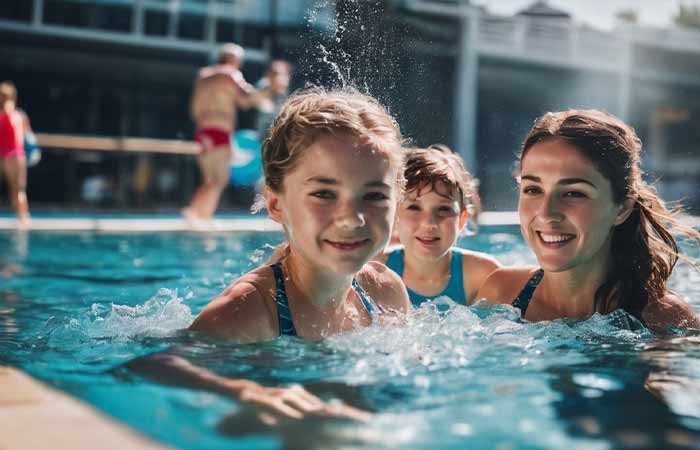
For infants 12-18 months getting 30-minute weekly private lessons, it takes around 18 months to be able to swim 25 meters without stopping.
Toddlers aged 2-3 need about 12 months of weekly 30-minute private lessons to swim 25 meters.
Older children aged 3+ can achieve this same 25-meter benchmark in around 6 months or 20-30 hours with weekly 30-minute private lessons.
However, it takes most young swimmers 2-3 years of regular lessons to progress to swimming 100 meters nonstop and becoming truly proficient.
How Long Does it Take to Learn to Swim for Adults?
Adults can generally learn to swim within 20-25 hours of private lessons. This is assuming they have no fear of water and are able to consistently attend lessons. In most cases, adults become functional swimmers within two or three weeks’ worth of lessons, which amounts to around 35 hours of instruction.
However, with enough dedication and practice, an adult can learn to swim in as little as 20 hours over a four or five-day period. The time it takes to learn varies depending on factors like the frequency of lessons and the individual’s comfort level in the water.
How Long does it take to Learn to Swim for a Triathlon?
Learning to swim for a triathlon can take some time and effort, but with consistent training, it is achievable. For beginner swimmers who are starting from scratch, it typically takes about 4-6 months of regular practice to prepare for their first triathlon.
This means swimming 2-3 times per week and gradually building endurance and technique over time. However, if you already have some swimming experience, you may be able to shorten this timeframe.
It’s important to remember that everyone learns at their own pace, so the learning process may vary for each individual. Additionally, as triathlon swim preparation can be challenging and technical, especially later in life, investing in quality instruction and seeking guidance from experienced coaches can greatly expedite your progress.
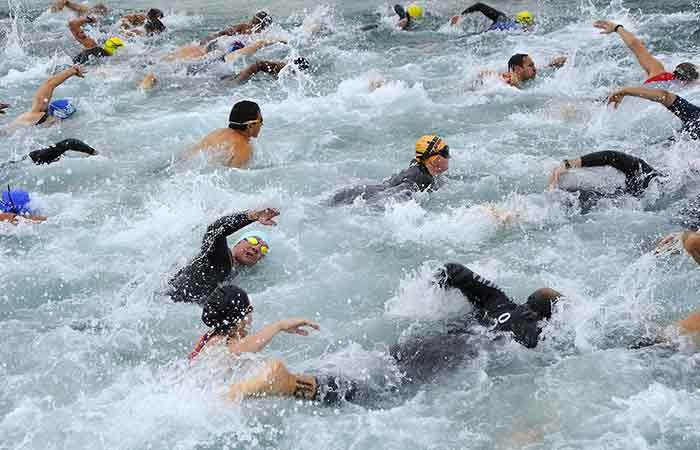
How Long does it take to Master all Swimming Strokes?
On average, adults who are already relatively fit and comfortable in the water can master the basic strokes within 35 hours of lessons.
For children, it may take longer as they need more time to develop their motor skills and confidence in the water.
So, while there is no set timeframe to become a master at all the strokes, consistent practice and quality instruction will help you improve over time.
How Long does it take to be at the Competitive Level?
Learning to swim at a competitive level requires dedication and time. While the exact duration may vary depending on individual circumstances, it typically takes several years of consistent training to reach this level of skill.
Training requirements for competitive swimmers are demanding. It involves regular practice sessions, often multiple times a week, focusing on building endurance, speed, and refining stroke technique. Swimmers at this level also engage in strength and conditioning exercises to enhance overall performance.
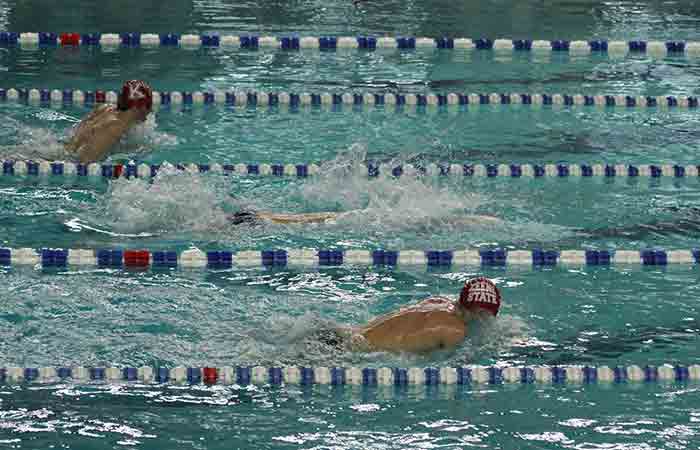
Ways to Learn to Swim in Less Time
Here are some tips to make your learning process faster.
Set a Goal
Setting a goal is an important step in learning to swim faster. When you have a specific objective in mind, it helps you stay focused and motivated. Additionally, it gives you something to work towards and measure your progress against.
By setting a goal, such as improving your speed or mastering a particular stroke, you can structure your training sessions and track your performance over time. Remember that goals should be realistic and achievable within the timeframe you have set for yourself.
So whether it’s completing a certain distance or reaching a specific time milestone, having clear goals will help accelerate your swimming learning journey.
Enroll in Structured Lessons with a Professional Coach
Enrolling in structured swimming lessons with a certified instructor can significantly accelerate your learning process.
A professional coach will provide personalized guidance, correct your technique, and offer tailored drills to improve your skills efficiently.
Finding an instructor who can create a positive and encouraging learning environment can make all the difference in your progress.
Get More Time in the Water
To learn how to swim more quickly, it’s important to spend as much time in the water as possible. The more you practice swimming, the faster you’ll improve.
Regular practice helps your muscles remember what to do, so try to swim at least a few times a week if you can.
By making swimming a regular part of your routine, you’ll be able to build your skills faster and become a stronger swimmer in no time.
Focus on One Skill at a Time
Learning to swim can be overwhelming, especially if you try to learn multiple skills at once. To make the learning process more efficient, it’s important to focus on one skill at a time.
By breaking down swimming into specific skills, such as floating or mastering the freestyle stroke, you can concentrate your efforts and progress faster. This approach allows you to develop each skill individually before moving on to the next one.
So instead of trying to do everything at once, take small steps and master one skill before moving forward. By focusing on one skill at a time, you’ll build a solid foundation and become a more confident swimmer in less time.
Use of Swim Aids & Gear
Swim aids like kickboards, pull buoys, and fins can help isolate and improve specific aspects of your technique. They provide assistance and allow you to focus on refining your form. They build strength and ease in learning proper stroke techniques.
Do not forget to buy yourself a good swimming costume and a decent pair of swim goggles to protect your eyes from water and help you see better underwater.

Warm-Up and Cool-Down
Incorporate warm-up and cool-down routines before and after your practice. Warming up prepares your body for focused swimming while cooling down helps prevent muscle soreness and injury.
Video Analysis
Record yourself swimming and analyze the footage to identify areas for improvement. Compare your technique to professional swimmers’ videos to gain insights into correct form and body positioning.
Peer Learning
Swim with more experienced friends or training partners. Observing and learning from others can help you grasp techniques faster and challenge yourself to keep up with their pace.
Join Swimming Communities
Engage with online forums, social media groups, or local swimming clubs. Sharing experiences, receiving advice, and learning from others can accelerate your learning journey.
Positive Visualization
Visualize yourself swimming confidently and efficiently. Positive visualization can improve your mental readiness and help you internalize correct techniques faster.
Signs of Progress
Noticeable signs that indicate swimming skills are developing include:
- Decreased reliance on floatation devices
- Improved breath control and face comfort in the water
- Swimming further distances without needing to stop
- More efficient stroke entries and turns
- Faster lap times and stamina for drills
Celebrating these small wins provides motivation to keep practicing!
The Importance of Regular Practice
Regular practice is essential for becoming a proficient swimmer. When you consistently practice swimming, you improve your skills and become more comfortable in the water. This allows you to swim more efficiently and with better technique.
Regular practice also helps build endurance, so you can swim longer distances without getting tired. By dedicating time to practicing, you can develop your swimming abilities and become a stronger and more confident swimmer.
Swimming regularly also has significant safety benefits. As you practice, you become more familiar with the water and learn how to stay safe while swimming. This includes understanding proper breathing techniques, improving your stroke efficiency, and being aware of potential dangers in the water.
Regular practice gives you the opportunity to refine these skills and ensure that you are well-prepared for any situation in the water.
In addition to skill development and safety benefits, regular practice is necessary if you want to achieve specific goals in swimming. Whether it’s completing a triathlon or mastering all the different strokes, consistent training is crucial for progress.
Time commitment plays an important role here – investing regular hours into your practice sessions, focusing on one skill at a time, finding a great teacher who can guide your progress effectively with quality instruction; along with setting clear goals helps make improvements quicker than ever before!
Remember: The key to becoming a proficient swimmer lies in putting in the effort through regular practice sessions!
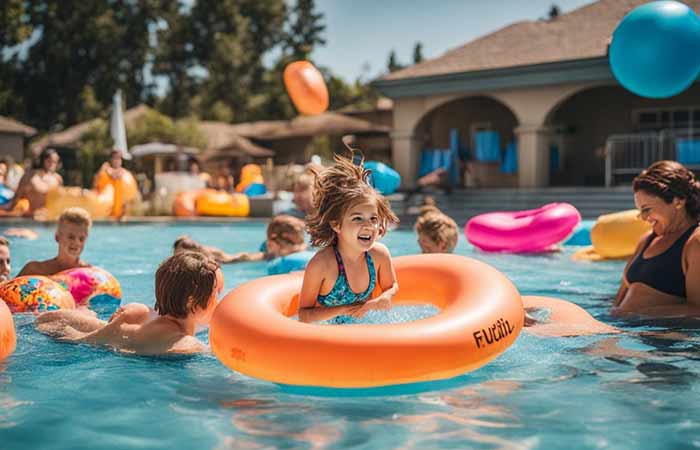
In a nutshell, learning to swim takes time but follows a clear path. With quality instruction and regular water time, most people can become proficient swimmers within few months. Patience, practice, and a motivated attitude will get you to the finish line!
FAQs
Can you learn to swim in 2 or 3 weeks?
While you can make progress in 2/3 weeks, it’s not realistic to go from complete non-swimmer to proficient in just this timeframe. Expect closer to 2-3 months for basic proficiency.
Is it difficult to learn to swim?
It is not difficult. Many people can swim with consistent practice and quality instruction. It is a skill that does require time and effort to master proper coordination and technique.
How many swim lessons does it take to learn freestyle?
For beginners, expect to spend about 1-3 months of lessons focused on coordinating the freestyle stroke with good technique. Plan for about 20-30 hours of instruction.
How long should swim lessons be?
Ideally, swim lessons should be 30-45 minutes long. This allows time to review techniques, practice new skills, build endurance, and rest between drills. 25-yard pools are best for lessons.
Do you learn faster with private or group lessons?
Typically, private lessons allow for faster learning as instruction is customized exactly to your abilities and needs. Group lessons can also be effective with an experienced instructor.
How old should a child be to learn to swim?
Kids as young as 6 months can become comfortable in the water. But formal lessons work best starting age 3-5 when kids have better physical coordination and focus.
How often should a child take swim lessons?
For optimal progress, swim lessons 1-2 times per week are recommended. More frequent lessons reinforce skills better than just once weekly lessons.
Are swimming lessons necessary for beginners?
Yes, taking swimming lessons from a qualified instructor is highly recommended for beginners. Swimming lessons provide proper guidance, and safety instructions, and help build confidence in the water.
What are some tips for beginners learning how to swim?
Some tips for beginner swimmers include starting with shallow water, practicing breathing techniques, using flotation devices for support if needed, and gradually progressing from simple strokes to more complex ones. Practice regularly and be patient with yourself!
References
- https://scholarworks.bgsu.edu/cgi/viewcontent.cgi?article=1568&context=ijare
- https://www.frontiersin.org/articles/10.3389/fpsyg.2020.00969/full
- https://www.ncbi.nlm.nih.gov/pmc/articles/PMC7277817/
- https://www.redcross.org/content/dam/redcross/training-services/course-fact-sheets/STSC-Supplement-071913.pdf
- https://www.physio-pedia.com/Motor_Control_and_Learning
- https://www.ncbi.nlm.nih.gov/pmc/articles/PMC7503358/
- https://www.usms.org/-/media/usms/pdfs/ebooks/us%20masters%20swimming%209%20swim%20tips%20for%20triathletes.pdf
- https://www.triathlete.com/collection/triathlon-swimming

